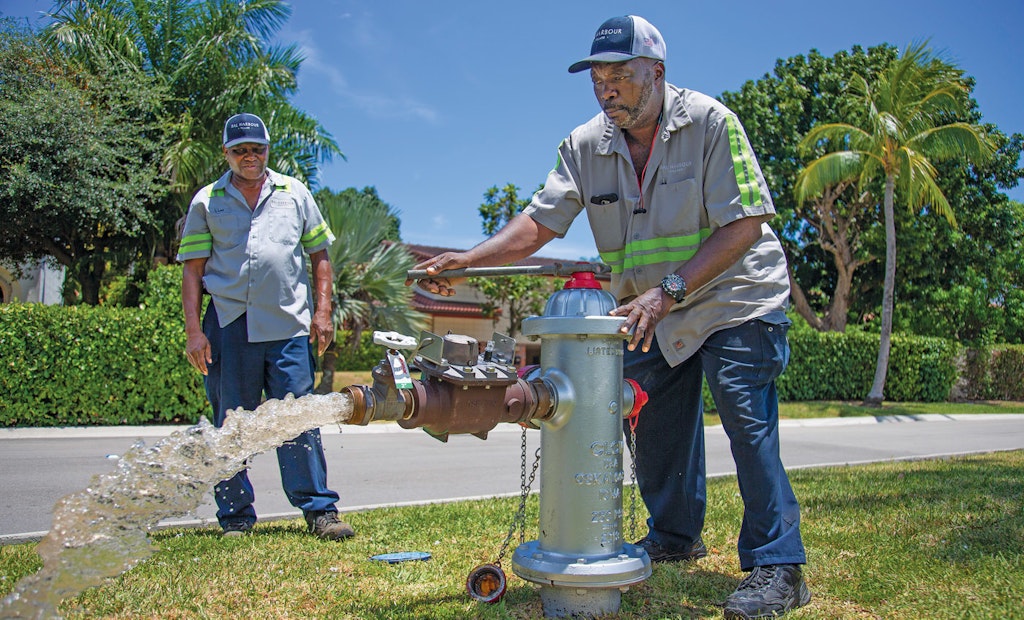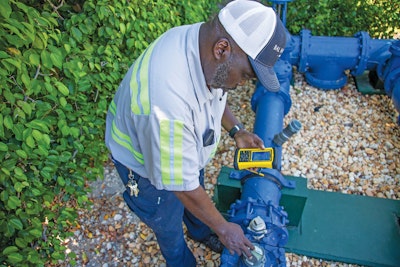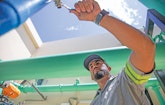
Bal Harbour Park and Public Spaces utility service worker Roger Daniels tests a backflow preventer on a fire hydrant while Larry Lee looks on. (Photography by Samuel Navarro)
Bal Harbour may be best known as an affluent and glamorous residential and resort suburb of Miami — a Florida crown jewel.
But like the proverbial king who puts his pants on one leg at a time, the island village is in one respect no different from every other community in the...








